Planting for Pergolas
Structures such as pergolas are brilliant for creating a focal feature in the garden - even more so when they are covered in beautiful plants! Climbers will bring colour and seasonal interest to your pergola and there are huge variety to choose from. I've picked out some of my reliable favourites below.
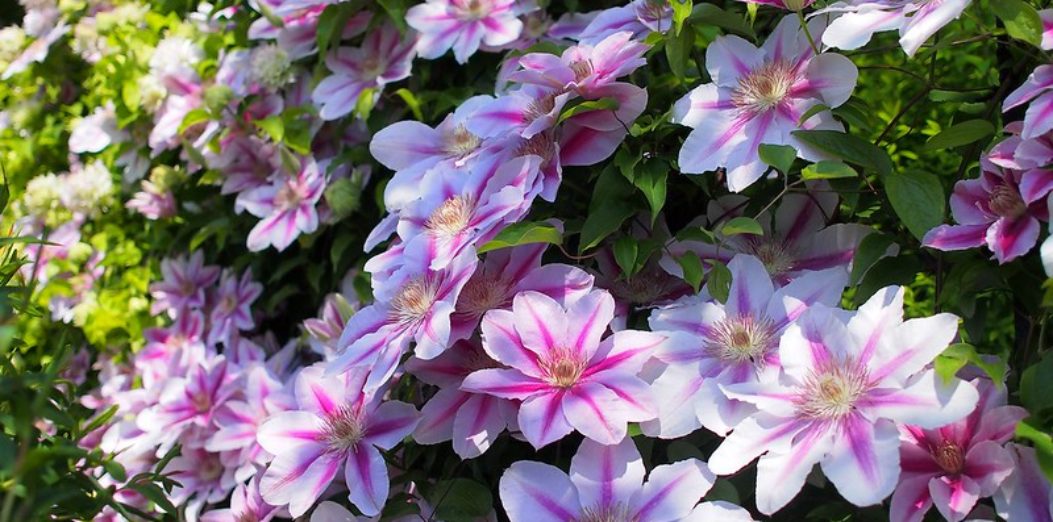
Pergola Plant Favourites
Below are a few of my recommended plants:
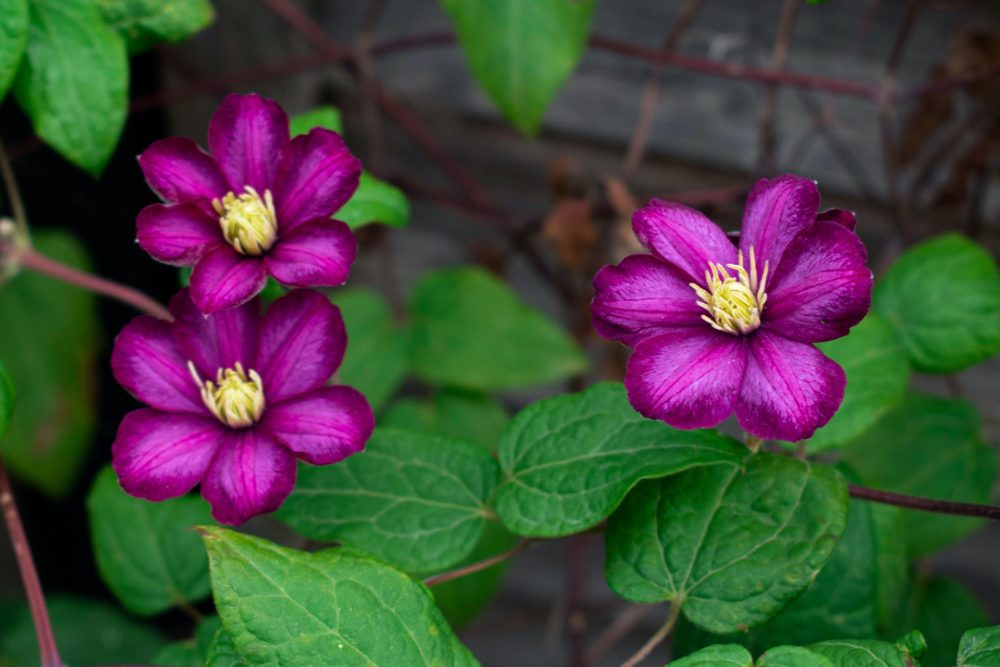
Clematis
- Clematis are popular with many gardeners for a reason. With a wide range of colours, flower size and with vigorous or compact varieties it is a very versatile plant.
- Most clematis will grow well in sun or partial shade but avoid deep shade. When purchasing a clematis check its preferred position before planting.
- The most important thing to remember when planting clematis is that they need their roots to be kept cool and moist, so plant the base of the clematis in light shade or provide shading with other plants or a dressing.
- If you pick the right clematis combinations, you can have colour throughout the year.

Roses
- A classic cottage garden staple for any pergola is the climbing rose.
- Like clematis, there is a wide variety of climbing and rambling roses with many colours, double or single flowers, thornless or scented.
- The key is picking the right rose for your garden. Consider the overall height and vigour when picking your rose as well as the position it will be in, as most roses prefer full sun, with a few tolerating semi shade.
- To get as long a flowering period as possible form your rose, deadhead climbing roses after flowering to encourage a second flush of flowers.
- For the first few years, pruning is not necessary, just make sure to train new stems regularly. But once established, prune in autumn after flowering, back to the main framework.
- Roses and clematis make a particularly lovely combination.
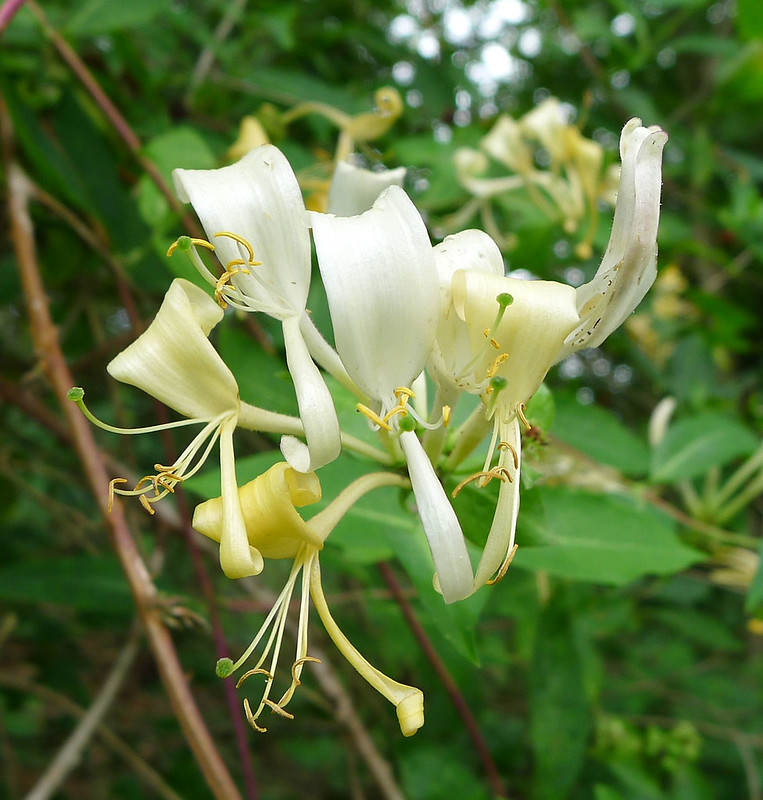
Honeysuckle
- With beautifully twining growth, honeysuckles (Lonicera) are ideal plants for pergolas.
- Lonicera periclymenum is a wildlife-friendly, native honeysuckle with deliciously perfumed flowers.
- The blooms come in a range of colours, including yellow, orange, red, pink and white.
- Plant in dappled shade with roots in the shade and stems in the sun.
- Those that flower early in the summer should be pruned after flowering. Cut back by a third to maintain a neat shape, but don’t remove the flower heads as these will become berries. Those that flower later in the summer should be pruned lightly in spring.
- For a cottage garden look, grow honeysuckle with roses.
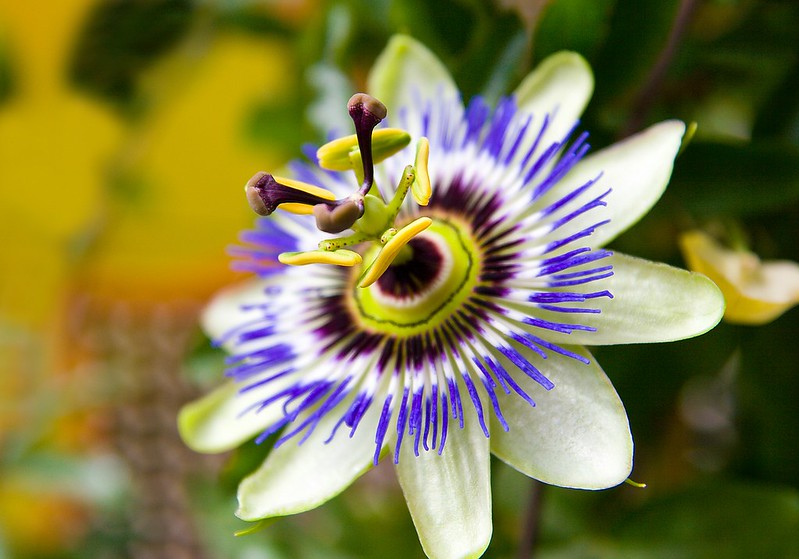
Passion Flower
- The bee-friendly blooms of passion flowers (Passiflora) have striking flowers with an exotic appearance, followed by orange fruits.
- Best grown in full sun or partial shade in moist, well-drained soil.
- Choose a hardy variety such as Passiflora caerulea, best planted in a sunny sheltered position as they can be a little tender.
- Prune once a year in early spring if necessary.
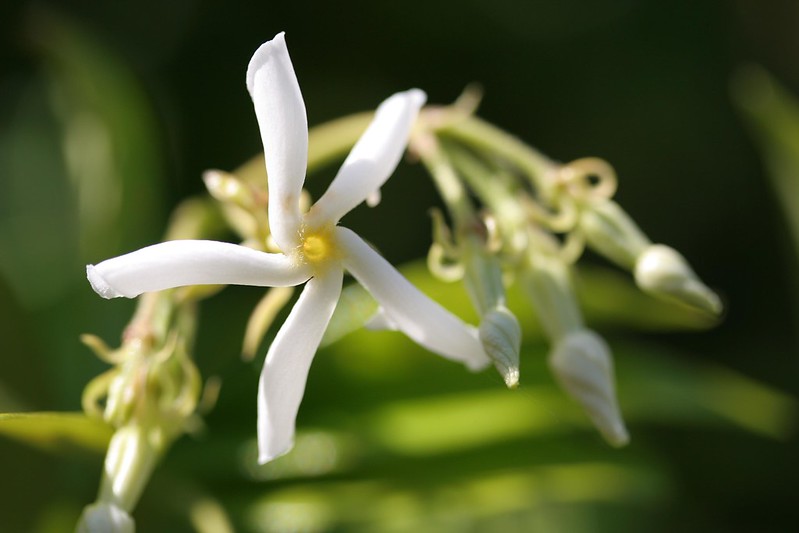
Star Jasmine
- Star jasmine (Trachelospermum jasminoides) is a beautifully scented, evergreen climber.
- Enjoy the heady scent of its small, white star shaped flowers on a warm summer’s evening.
- Although star jasmine grows best in a sunny location, it will cope well in partial shade.
- A self-clinging climber, it doesn’t need much attention once established.
- In spring tie in stray shoots and prune to shape as required.
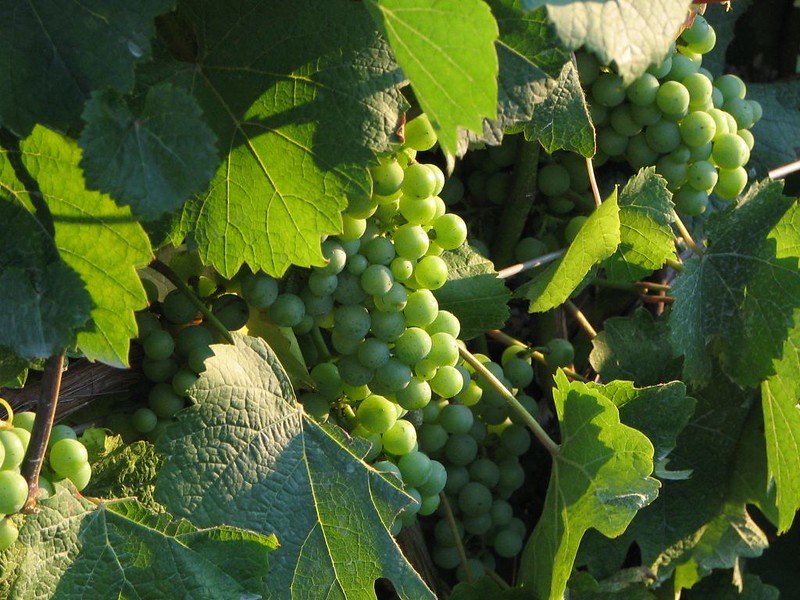
Grapevine
- If you’re looking to create a dense canopy for shade, consider growing Grapevines.
- By growing them over a pergola, you can enjoy the pendulous fruits from midsummer to early autumn hanging down from the canopy.
- There are several varieties of Vitis vinifera can be grown outdoors to produce edible fruit.
- They need a sunny sheltered position and do take a far amount of care to produce the most fruit.